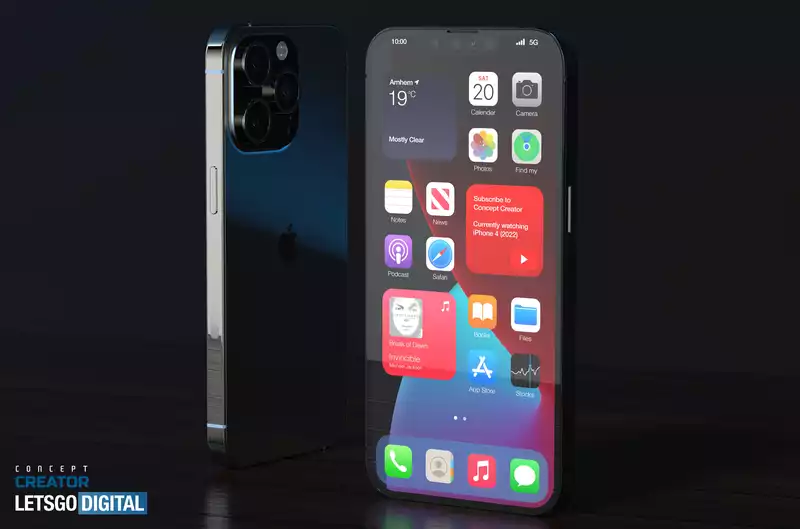Apple may be falling behind rivals such as Samsung, OnePlus, and Google. But a new report argues that that will change as all upcoming iPhones, not just the iPhone Pro model, will offer adaptive refresh rates.
The catch? That obviously won't happen until next year's iPhone 14. If you want an adaptive display on your next iPhone before then, your options are likely to be limited to the iPhone 13 Pro or iPhone 13 Pro Max.
This is the conclusion MacRumors reached after the latest news coming out of Apple's supply chain. This hypothesis is based on a report by The Elec that looks at LG's efforts to prepare its display manufacturing operations for Apple's future phones. [The report discusses a few details of low-temperature polycrystalline oxide (LTPO) display manufacturing.
The ability to manufacture LTPO screens will allow LG, along with Samsung, to supply Apple with dynamically adjustable OLED panels. Samsung will reportedly manufacture LTPO screens for this year's iPhone 13, but only enough for the new feature on the Pro model; a second supplier in 2022 would allow Apple to extend the feature to more affordable devices.
Of course, it's not just a matter of supply; adding dynamic refresh rate to the iPhone 13 Pro model's display would allow Apple to differentiate the two models from less expensive devices. As a result, shoppers may be willing to pay more for the iPhone 13 Pro than for the standard iPhone 13.
Like the iPhone 12 Pro, the iPhone 13 Pro is expected to start at $999, while the iPhone 13 and iPhone 13 mini are expected to start at $799 and $699 respectively.
MacRumors reports that the iPhone 14 may differentiate the Pro models by following a long-rumored move to eliminate the iPhone's signature notch. Apple could also continue to add new features to the Pro models' cameras, further justifying the higher price.
A fast refresh display with LTPO panels is one of the major changes expected in the iPhone 13 Pro, and we should also see notable camera improvements when it debuts this fall All four new iPhone models will have a smaller notch (the notch not completely gone) and are expected to benefit from the more powerful A15 Bionic processor.
For now, the biggest change to the iPhone 13 and iPhone 13 mini will likely be the addition of a LiDAR sensor that will support more immersive AR apps and help improve portrait photography. It is also possible that the less expensive iPhones will adopt the sensor-shift image stabilization feature that Apple introduced last fall with the iPhone 12 Pro Max.
Will it be enough to keep consumers interested in the iPhone 13 and iPhone 13 mini? For some would-be upgraders, the lack of a fast refresh rate may not be a deal killer. However, for iPhone users who want the equivalent of the features that Galaxy S21 and OnePlus 9 users already enjoy, it appears that they will have no choice but to purchase the iPhone 13 Pro or wait until 2022 when all iPhones will have this feature.
This year's iPhone 13 lineup is expected to consist of the same four models as the iPhone 12, but Apple is said to be changing things up with the 2022 iPhone. Analyst Ming-Chi Kuo predicts that the iPhone 14 will come in two sizes, 6.1" and 6.7", and that these sizes will be available in both standard and professional models.
While a more consistent screen size will certainly make it easier for Apple's display suppliers to produce LTPO panels in larger quantities, it is somewhat disappointing for iPhone 13 shoppers who were not planning to see the iPhone 13 Pro version .










Comments